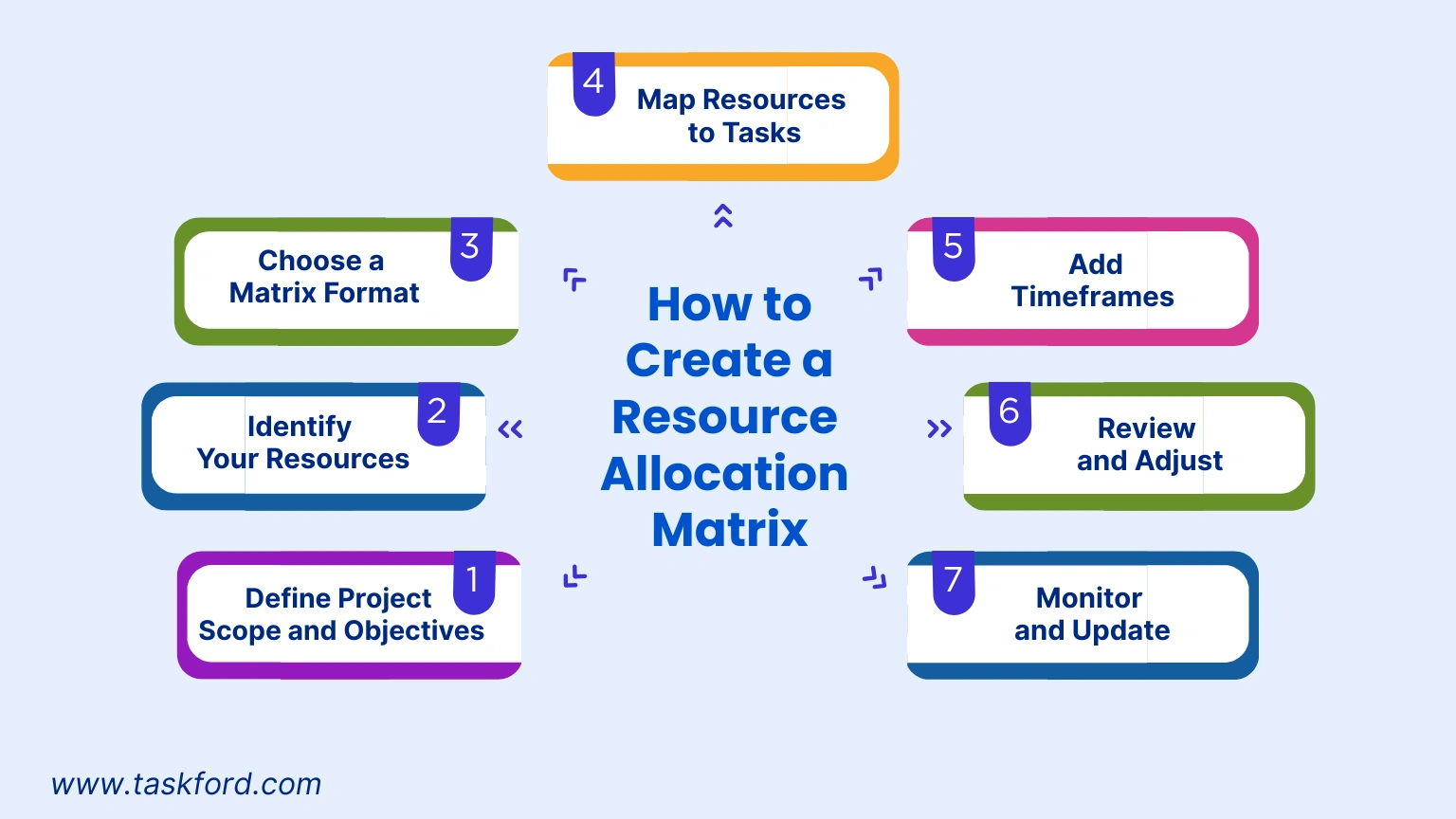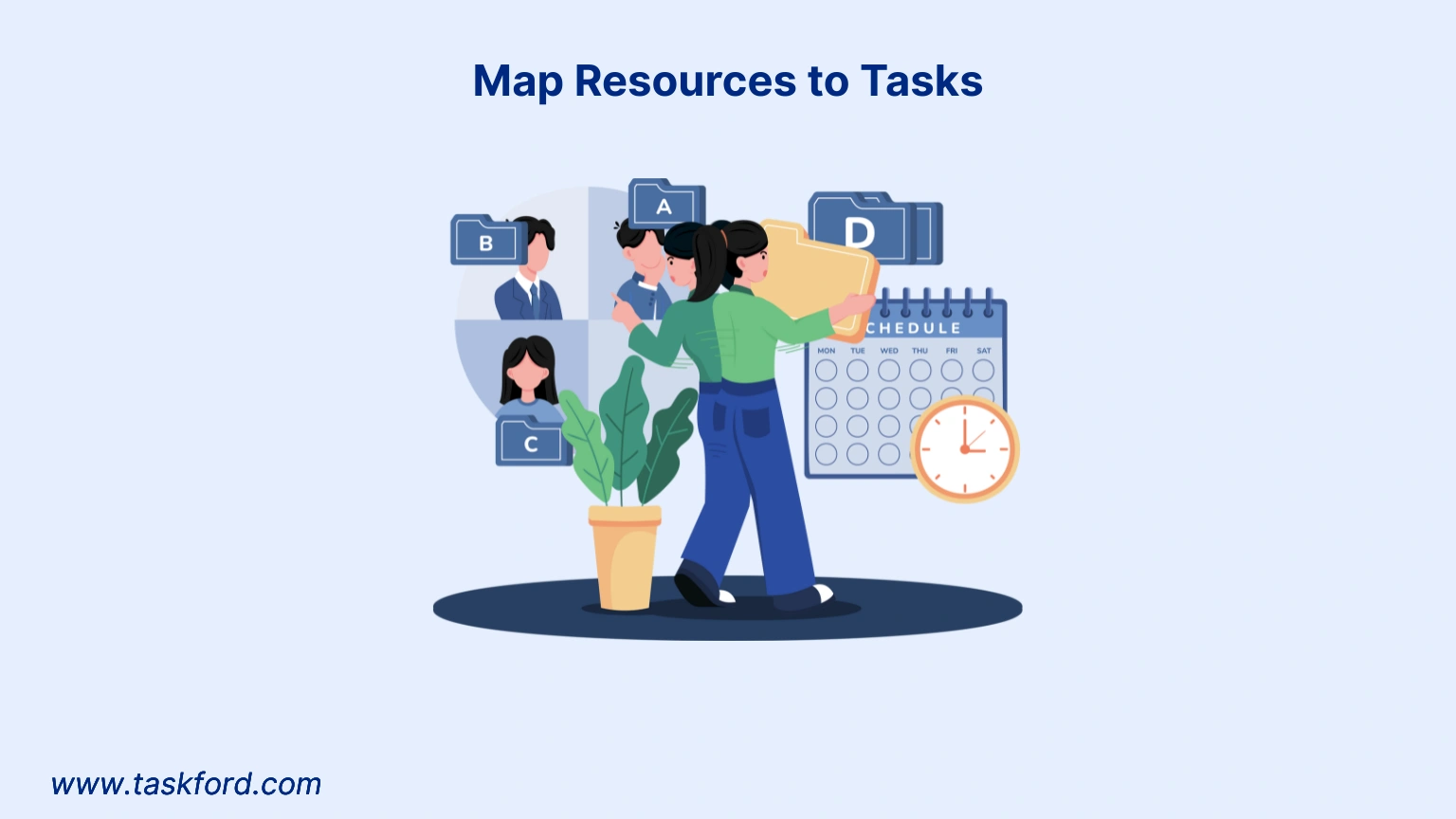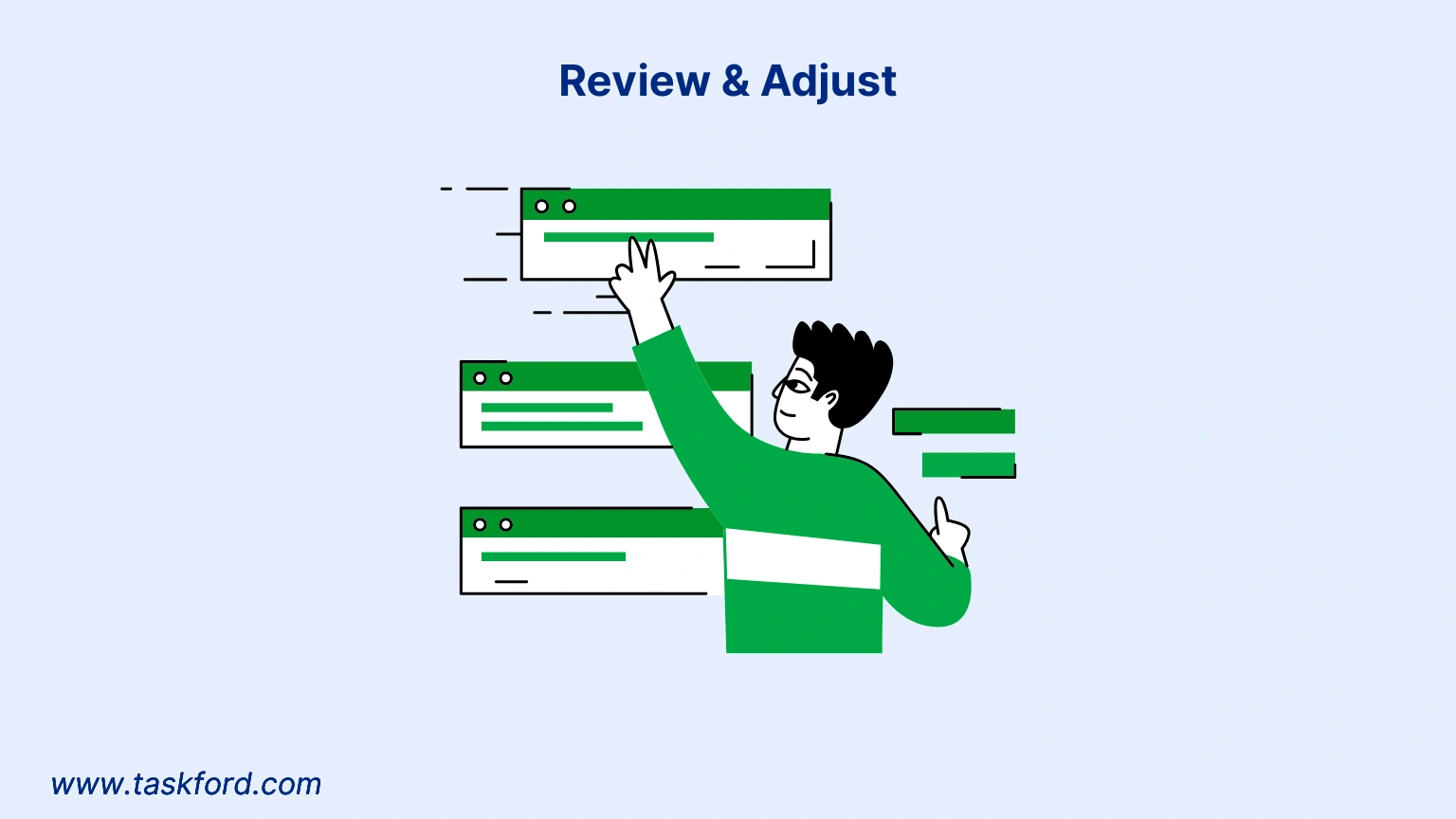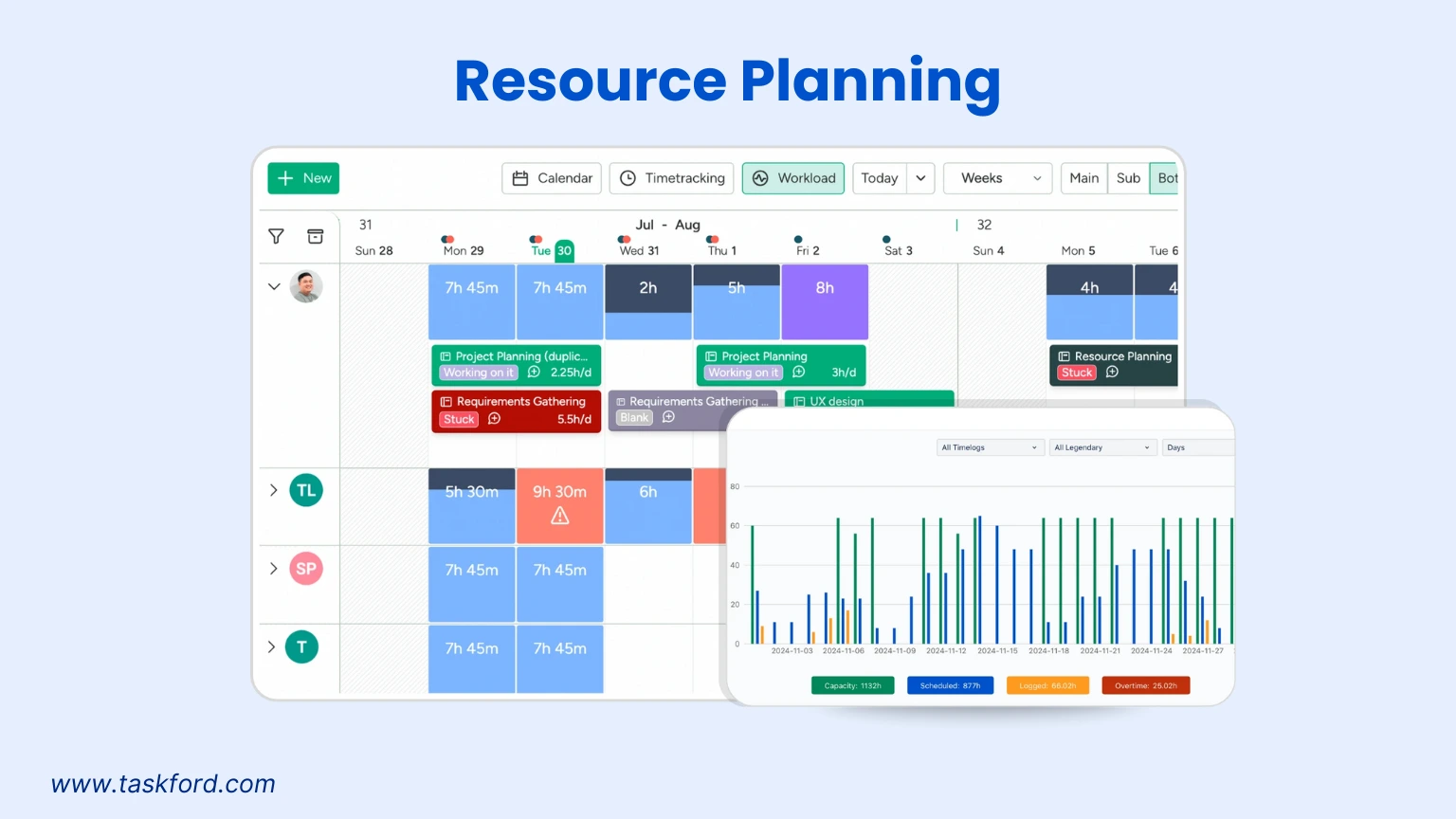What Is a Resource Allocation Matrix and How to Make One?
Discover how a resource allocation matrix can transform your project management by optimizing resource use and ensuring efficient task distribution.
Effective resource management is the foundation of successful project execution. Whether you’re leading a small team or managing a complex operation, ensuring resources like time, budget, personnel, and tools are used efficiently can determine your project’s success. A resource allocation matrix is a powerful tool to achieve this.
This blog explores what a resource allocation matrix is, why it’s critical for project management, and how to create one to optimize your resource management processes. We’ll provide a detailed, step-by-step guide with actionable insights for project managers, team leads, and business owners looking to enhance efficiency and productivity.
What Is Resource Allocation?
Resource allocation is the process of assigning and managing resources, such as people, time, budget, or tools, to specific tasks or projects to achieve desired outcomes. It involves planning, monitoring, and adjusting resource use to balance workloads, meet deadlines, and stay within budget. Effective resource allocation ensures the right resources are available at the right time to keep projects on track.
For a deeper dive into resource allocation and its role in project management, check out our comprehensive guide on Resource Allocation
What Is a Resource Allocation Matrix?
A resource allocation matrix is a visual tool used in project management to map the distribution of resources across tasks, projects, or teams. It provides a clear overview of who is working on what, when, and for how long, ensuring resources are assigned effectively to meet project goals. Typically presented as a table or grid, the matrix lists resources (such as team members, equipment, or budget) on one axis and tasks, projects, or timeframes on the other. This structure helps project managers identify gaps, prevent overloading team members, and ensure every project component is properly resourced.
The strength of a resource allocation matrix lies in its clarity and simplicity. It eliminates guesswork by showing resource availability, task assignments, and potential bottlenecks at a glance. By using this tool, businesses can align their resource management strategies with project objectives, leading to better decision-making and improved outcomes.
Why Use a Resource Allocation Matrix?
Managing resources without a clear plan is like navigating without a guide. A resource allocation matrix offers several benefits that make it indispensable for project management:
- Clear Visibility: It provides a snapshot of resource utilization, showing who is available, who is overcommitted, and where adjustments are needed.
- Optimized Resource Use: By identifying underutilized or overstretched resources, you can balance workloads and maximize your team’s capacity.
- Conflict Prevention: The matrix highlights scheduling conflicts or resource shortages early, allowing you to address issues before they derail your project.
(Learn more: Clashing Priorities? Here’s How to Solve Schedule Conflicts)
- Improved Collaboration: Teams can see how their tasks align with others, fostering better communication and coordination.
- Data-Driven Decisions: With clear data on resource allocation, you can make informed choices about hiring, outsourcing, or redistributing tasks.
For businesses aiming to stay competitive, a resource allocation matrix is a vital tool. It ensures every resource, whether a team member’s time or a piece of equipment, is used to its fullest potential, boosting efficiency and reducing waste.
Key Components of a Resource Allocation Matrix
To create an effective resource allocation matrix, you need to understand its core components. Each element ensures the matrix functions as a robust resource management tool.
1. Resources
Resources include anything needed to complete a project: team members, equipment, software, budget, or time. In the matrix, resources are typically listed along one axis, such as rows or columns.
2. Tasks or Projects
Tasks, projects, or deliverables are the activities requiring resources. These are listed on the opposite axis, providing a clear view of what needs to be accomplished.
3. Timeframes
Time is a critical factor in resource allocation. The matrix often includes a timeline (daily, weekly, or monthly) to show when resources are assigned to specific tasks.
4. Allocation Details
This includes specific details about how resources are assigned, such as the number of hours a team member will spend on a task or the percentage of a budget allocated to a project phase.
5. Status Indicators
Some matrices use color-coding or symbols to indicate resource status, such as “available,” “overallocated,” or “at capacity.” This makes it easier to identify issues quickly.
By combining these components, a resource allocation matrix provides a comprehensive view of resource distribution, simplifying the management of complex projects.
How to Create a Resource Allocation Matrix
Creating a resource allocation matrix is straightforward if you follow a structured approach. Here’s a step-by-step guide to build one tailored to your project’s needs.

Step 1: Define Your Project Scope and Objectives

Start by clarifying the project’s goals, deliverables, and timeline. Identify the tasks or phases requiring resources and estimate the time and effort each will need. This step lays the groundwork for effective resource allocation.
Example: For a website development project, tasks might include wireframing, coding, content creation, and testing. Each task requires specific skills, tools, and time.
(Learn more: What is Scope In Project Management?)
Step 2: Identify Your Resources
List all available resources for your project, including:
- Human Resources: Team members, their roles, and availability.
- Physical Resources: Equipment, tools, or facilities.
- Financial Resources: Budget allocations for tasks.
- Time Resources: Available hours or days for each task.
Be specific. For example, instead of listing “developer,” note “senior front-end developer, available 20 hours per week.”
Step 3: Choose a Matrix Format
Decide how to structure your matrix. A spreadsheet works well for most projects. Use tools like Microsoft Excel, Google Sheets. Place resources on one axis (e.g., rows) and tasks or timeframes on the other (e.g., columns).
Pro Tip: Use color-coding to highlight resource availability or conflicts, such as green for available, yellow for at capacity, and red for overallocated.
Step 4: Map Resources to Tasks

Assign resources to each task or project phase based on availability, skills, and project needs. Include details like:
- Hours a team member will dedicate to a task.
- Budget allocated to a specific activity.
- Equipment or tools required.
For example, in a marketing campaign, you might assign a graphic designer to create visuals for 10 hours, a copywriter to draft content for 8 hours, and a $2,000 budget for ad spend.
Step 5: Add Timeframes
Incorporate a timeline to show when resources are needed, using a daily, weekly, or monthly breakdown based on your project’s duration. Timeframes help track deadlines and ensure resources are available when required.
Step 6: Review and Adjust

Once your matrix is complete, check for issues like:
- Overallocation: Are team members assigned to too many tasks at once?
- Underutilization: Are resources idle when they could be used?
- Conflicts: Do multiple tasks require the same resource simultaneously?
Adjust assignments to balance workloads and prevent bottlenecks.
Step 7: Monitor and Update
A resource allocation matrix is a dynamic tool. Update it regularly as project needs change, new tasks arise, or resources become unavailable. Use project management software to track progress in real time and keep your matrix current.
Best Practices for Using a Resource Allocation Matrix
To maximize the effectiveness of your resource allocation matrix, follow these best practices:
- Keep It Simple: Avoid overloading the matrix with excessive detail. Focus on critical resources and tasks to maintain clarity.
- Use Visual Aids: Color-coding, charts, or graphs can make the matrix easier to read and understand.
- Involve Your Team: Get input from team members when assigning tasks to ensure workloads are realistic.
- Leverage Technology: Tools like TaskFord can enhance of the process, such as tracking resource availability or generating reports.
- Plan for Contingencies: Build in buffers for unexpected delays or resource shortages to keep your project on track.
By following these practices, you can create a resource allocation matrix that organizes resources effectively and drives project success.
Common Challenges and How to Overcome Them
Even with a well-designed resource allocation matrix, challenges can arise. Here’s how to address common issues:
Resource Overallocation: Assigning too many tasks to a single resource, leading to burnout or delays.
- Solution: Use the matrix to spot overallocation early. Redistribute tasks, hire additional help, or extend deadlines if possible.
Lack of Resource Availability: Key resources, like skilled team members or equipment, aren’t available when needed.
- Solution: Plan ahead by checking resource availability during the planning phase. Consider outsourcing or cross-training team members to fill gaps.
Changing Project Requirements: New tasks or shifting priorities disrupt your resource allocation plan.
- Solution: Build flexibility into your matrix by allocating extra time or resources for unexpected changes. Update the matrix regularly to reflect new requirements.
Poor Communication: Team members aren’t aware of their assignments or project timelines.
- Solution: Share the matrix with your team and hold regular check-ins to ensure everyone is aligned.
How TaskFord Enhances a Resource Allocation Matrix
TaskFord is a comprehensive project management and resource planning platform that strengthens your resource allocation matrix through its robust features.
- Resource Planning: TaskFord’s planning tools provide a clear view of resource availability, helping you update your matrix to align resources with project goals.

- Resource Allocation: TaskFord’s drag-and-drop scheduling allows precise task assignments based on team availability, preventing overallocation and enhancing matrix accuracy.

Real-World Example: Resource Allocation Matrix in Action
Imagine managing a product launch with a team of five: a project manager, two developers, a designer, and a marketer. Your resource allocation matrix might look like this:
| Resource | Week 1 (Product Design) | Week 2 (Development) | Week 3 (Testing) | Week 4 (Marketing) |
|---|---|---|---|---|
| Project Manager | 10 hrs (Planning) | 8 hrs (Coordination) | 5 hrs (Review) | 5 hrs (Launch Prep) |
| Developer 1 | 0 hrs | 20 hrs (Coding) | 15 hrs (Testing) | 0 hrs |
| Developer 2 | 0 hrs | 20 hrs (Coding) | 15 hrs (Testing) | 0 hrs |
| Designer | 15 hrs (Wireframes) | 5 hrs (UI Design) | 0 hrs | 5 hrs (Ad Creatives) |
| Marketer | 0 hrs | 0 hrs | 5 hrs (Strategy) | 20 hrs (Campaign) |
This matrix shows how each team member’s time is allocated across the project timeline, helping you identify gaps (e.g., no tasks for developers in Week 1) or potential overallocation (e.g., developers in Week 2).
Why Resource Allocation Matrices Are Essential for Scaling Businesses
As businesses grow, resource management becomes more complex. A resource allocation matrix provides the structure needed to scale operations efficiently. It helps you:
- Prioritize high-impact projects by allocating resources strategically.
- Identify hiring needs by highlighting resource shortages.
- Improve budgeting by tracking resource costs across projects.
- Enhance team morale by ensuring fair workload distribution.
For growing businesses, a resource allocation matrix is a strategic asset that drives long-term success.
Conclusion
A resource allocation matrix is a critical tool for project managers and business owners aiming to optimize resource management. By offering a clear, visual way to assign and track resources, it helps you avoid bottlenecks, balance workloads, and keep projects on track. Whether managing a small team or a large operation, a resource allocation matrix can transform your approach to project management.
Learn more
- Resource Management Explained: Key Definition, Must-Know Terms & Proven Techniques
- How Workforce Capacity Planning Helps You Say “Yes” to the Right Work
- Top Resource Planning Software for Hybrid Teams in 2025: A Feature-by-Feature Comparison
Subscribe for Expert Tips
Unlock expert insights and stay ahead with TaskFord. Sign up now to receive valuable tips, strategies, and updates directly in your inbox.